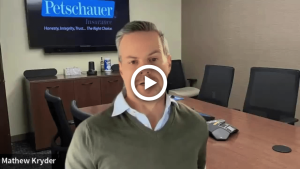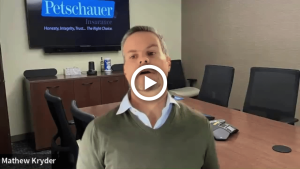Floater Policy: Insuring Your Valuables
 Last month, we wrote a blog discussing the proper way to insure an engagement ring or any other valuable item you were fortunate enough to receive over the holidays. The response was so overwhelming that now that Valentine’s Day is coming up we want to continue the discussion of insuring valuables. For those of you who have already had these items insured for some time now, you still need to keep the values up-to-date and this blog is to help you do that.
Last month, we wrote a blog discussing the proper way to insure an engagement ring or any other valuable item you were fortunate enough to receive over the holidays. The response was so overwhelming that now that Valentine’s Day is coming up we want to continue the discussion of insuring valuables. For those of you who have already had these items insured for some time now, you still need to keep the values up-to-date and this blog is to help you do that.
We understand that everyone’s definition of “valuables” is different so we thought it prudent to list a few:
and collectibles of all kinds may also qualify for Floater coverage. Even valuable pieces of art, camera equipment, stamp and/or coin collections can be insured. This brings us to the issue of establishing the “value” of what we already have insured.
For instance, many of us have a Personal Articles Floater, Inland Marine or Scheduled Items Policy already in place. Some of these policies have been in place for so long that we just pay the premium every year and don’t give a moment’s thought as to what they actually cover. Having said that, any given item may have been adequately insured when it was first put on the policy, but how adequately is it insured today? For example, what about the fluctuation in gold prices? When I received my first charm bracelet, gold was selling for $30 an ounce. At its height it was almost $1,000 an ounce. I wouldn’t still want that charm bracelet to be insured at $30 an ounce! Many times jewelry appreciates in value. The same may be true of fine art, stamps or coins.
January is a time of New Year’s Resolutions, personal reassessments, and introspections. So why not take this as an opportunity to also reassess not only the insurance coverages you have in place, but the values of the items specifically covered under those policies? Being “fully covered” is a relative term and one that scares those of us who deal with losses every day, because there is really no way to be fully covered for every eventuality. However, you can improve the coverage if you review your policy on an annual basis. For example, what items are covered on these policies? How are they covered, individually or as a group? Is the coverage subject to specific exclusions? If you travel, is the coverage worldwide? Have any of the items appreciated in value, depreciated in value? What would it cost if you had to replace these valuables in today’s market? These are just a few of the many questions we answer for our clients every day. So, why not take advantage of your broker’s knowledge and check with them regarding the insurance you have in place and the values stated. My guess is that you will be glad you did!
Karen Skoler, CPCU









